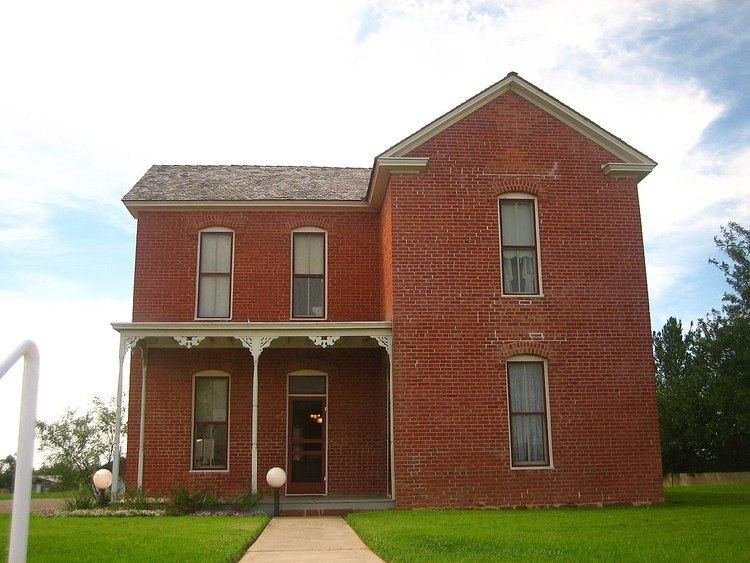Built 1887 RTHL # 5786 Designated RTHL 1980 Area 3,642 m² Architectural style Victorian architecture | NRHP Reference # 80004099 TSAL # 227 Opened 1887 Phone +1 432-333-4072 Added to NRHP 8 January 1980 | |
 | ||
Location 112 E. Murphy St., Odessa, Texas Address 112 E Murphy St, Odessa, TX 79761, USA Hours Closed today SundayClosedMondayClosedTuesdayClosedWednesdayClosedThursdayClosedFriday10AM–3PMSaturday10AM–3PMSuggest an edit Similar Globe of the Great Southwest, Presidential Museum and Lead, Odessa Meteor Crater, Stonehenge replica, CAF Airpower Museum Profiles | ||
The White-Pool House is a historic structure in Odessa, Texas, included on the National Register of Historic Places. It was opened to the public in 1984, and retains many of its original furnishings and some rotating exhibits.
Contents
The two-story red-brick house, located at 112 East Murphy Street (east of the downtown Odessa area), was built in 1887 by Charles White and later purchased in 1923 by Oso Pool; it is the oldest surviving structure in the city.
The rooms in the White-Pool House parallel two significant periods of history: (1) The 1880s during the pioneer era when it was built and occupied by the White family and (2) The 1930s during the oil boomtown when it was the home of the Pool family. In the back of the house are a windmill, barn and other farm buildings, and an outhouse of handmade blocks dating from the founding. In the barn is a display of permanent exhibits of horse-drawn equipment.
The White-Pool House is open Tuesday through Saturday from 10 a.m. to 3 p.m. Guided tours for individuals or groups are available; there is no admission charge.
The White Era
Charles White and his wife, Lucy, former residents of Indiana and members of the Quaker denomination, arrived in Odessa, the seat of Ector County, accompanied by their two sons, Wilfred and Herbert.
Lucy had a perceived health need to live in a dry climate like that of West Texas, and Charles’ grain business in Indiana had failed in the economic stress of the decades following the American Civil War. The railroad was selling property in Ector County; thus, the Whites came to Odessa to begin their lives anew. Charles and Wilfred operated a general merchandise store at Third and North Grant streets. Charles also planted a pear and peach orchard with the windmill as the centerpiece of the irrigation system. He grew sorghum, cotton, and vegetables.
White purchased a section of land near the railroad tracks for $870 and built the Victorian-style house. In 1890, Wilfred White was appointed as only the second postmaster of Odessa, and the next year voters elected him as county surveyor.
Charles White died on June 14, 1905. After Charles’ death, Lucy and Herbert moved east to Mineral Wells, in Palo Pinto County, Texas.
The Pool Era
After Lucy and Herbert White moved away, Wilfred sold the house, which changed hands several times until it was purchased by Oso Pool in 1923.
Four years later, in 1927, petroleum was discovered in the Permian Basin, and the influx of people into Odessa created a housing shortage. Pool therefore turned the house into a five-unit apartment building, a decision which required adding bathrooms, closing in porches, and partitioning the rooms. Pool lived in the basement and rented out the upper rooms. Over the next half-century, ownership of the house was transferred between family members, and its condition deteriorated.
Finally, on June 12, 1978, Pool gave the house and six acres to Ector County for historical preservation. Restoration was undertaken between 1979 and 1984. In 1986, the White-Pool House Friends, a non-profit organization, was formed for charitable and educational purposes to preserve the historical heritage of the house.
